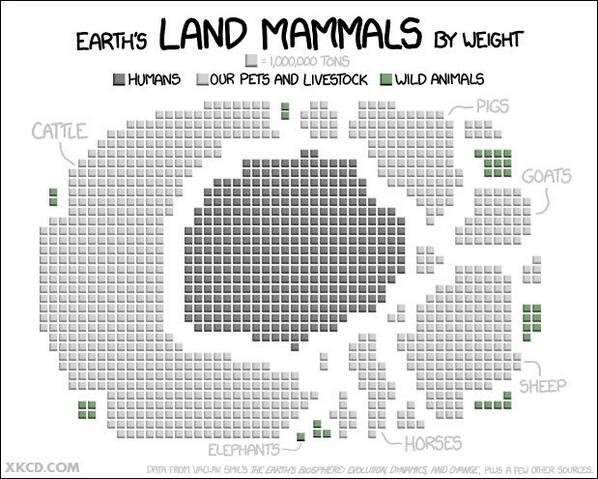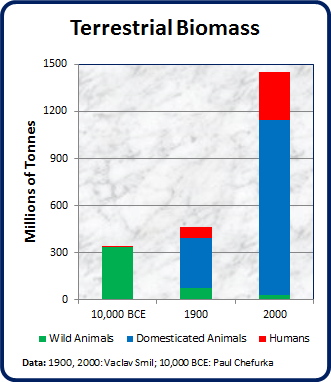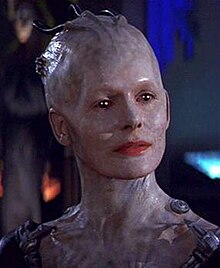Environment & Energy
Related: About this forumTerrestrial animal biomass then and now
I found this rather sobering graphic this morning:

I wondered how much this biomass distribution has changed over time, so I hunted around and found a paper by Vaclav Smil with biomass data for 1900 and 2000. I created a biomass estimate for 10,000 AD using an estimated human population of 4 million, a domesticated animal biomass equivalent to the human biomass, and a total biomass two thirds of the 1900 total:

Humans and our domesticated livestock are not only replacing wild fauna, but are drastically increasing the load on the biosphere through sheer force of numbers. There appear to be three to four times more human-related biomass today than the total planetary biomass of neolithic times.
This massive increase in both human and total biomass seems to be a direct result of our appropriation of the rest of the planet's biological productivity through agriculture, aided by an additional amplification from the use of fossil fuels.
Is it any wonder the biosphere is in desperate trouble?
NYC_SKP
(68,644 posts)I probably won't be around to witness much of it, but it's not hard to imagine the most likely outcomes.
![]()
OnlinePoker
(5,719 posts)I would think their numbers would make up a substantial percentage of domestic animals.
GliderGuider
(21,088 posts)Smill didn't offer a breakdown by species, so here are some Wiki numbers, plus my estimate for pigs and horses:
Cattle: 520 MT
Pigs: 140 MT
Sheep & Goats: 105 MT
Chickens: 48 MT
Horses: 29 MT
Total: 842 MT.
I arrived at a total estimate of 1100 MT for "Domesticated Animals" based on Smil's data, so there is still plenty of room in there for horses, dogs, cats, alpacas, camels etc.
joshcryer
(62,269 posts)It doesn't include plants or plankton or insects or fish or whales presumably.
I saw a chart like the one you made that was basically vertebrates only. Naturally. Plants, insects, and bacteria, blow all other high trophic life forms out of the water as far as energy consumption and as far as mass.
GliderGuider
(21,088 posts)Ants and termites together have about twice the human biomass. No word on the biomass of cockroaches.
GliderGuider
(21,088 posts)MisterP
(23,730 posts)obviously that's what's eating up all our sheep!
